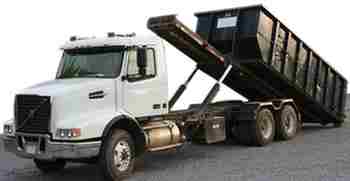But you will quickly find out that it is a lot easier to go out and buy the new materials you need than it is to get rid of the old that you tear out.
The most common and cost effective way to get rid of this debris for any job that will produce more than the smallest amount of torn out material is to rent a roll off container. Roll off containers, or ‘rolloffs’ as they are commonly referred to in the trade, are like a large one time use dumpster that you can fill will any and all types of trash.
Will a roll off container company work with me and how do I get the size I need?
This is the first questions many people ask when thinking about the need for a rolloff. There are standard sizes that are used in the industry and these sizes are called out in cubic yards. The most common sizes used by the do it yourself remodeler are the 10, 20 and 30 cubic yard varieties.
When you talk to a representative of a roll off container company they will, however, speak in terms of a ’20 yarder’ or ’30 yarder’. This is the vernacular of the trade and it is the way the sizes are expressed.
It is good to have some idea of the size you need prior to your call. This allows you to discuss ordering a rolloff and you can quickly and easily learn more about what you need. You will want to get the pricing and any information or rules they have about restricted materials without you having to ask (pardon me) a lot of ‘dumb’ questions.
What is the amount common dumpster sizes actually hold?
A cubic yard is an area that is 3 feet long by 3 feet wide by 3 feet deep. To get some idea, compare the size you need to this imaginary small one car garage. Our imaginary small one car garage (comparable to sizes of storage rental units) is sized at 14 ft wide by 22 ft deep by 8 (usable) ft high. A small building of this size would contain 100 cubic yards of space.
So when determining dumpster sizes that you want to consider how large of a roll off container you might need based on the amount of tear out material and waste you will have from your project.
10 yarders are quite small and would probably only be adequate for a very small project such as redoing the flooring in a bathroom or very small room.
20 yarders start to become the size you might want to consider for other smaller projects. They contain the space comparable to going back only a little more than 4 ft into our imaginary garage. But if you won’t have a lot of sheet rock or lumber to get rid of, this is a good starting size.
30 yarders start to get big enough to handle a larger project such as changing a wall or tearing out cabinets in rooms larger than bathrooms.
And if you really need the space a 40 yarder will give it to you. This would be like having the room to fill up our imaginary small garage nearly halfway full to the roof with debris.
And as a final word of advice, try not to cut it too close and order a rolloff that will end up being too small. If you are in doubt, go to the next larger size. It always seems that there is more to throw away than you think of. And if you get to the end of your project and find you have unused room in your rolloff, first of all be happy because this means you won’t have to call and have it emptied and then another returned for additional charges. Then look around and get rid of any other long lost trash or debris that would be hard to get rid of in any other way.
Good luck with your project! The last thing you will do is to call the roll off container company and let them know they can come and get their container. It’s a great call to make.
